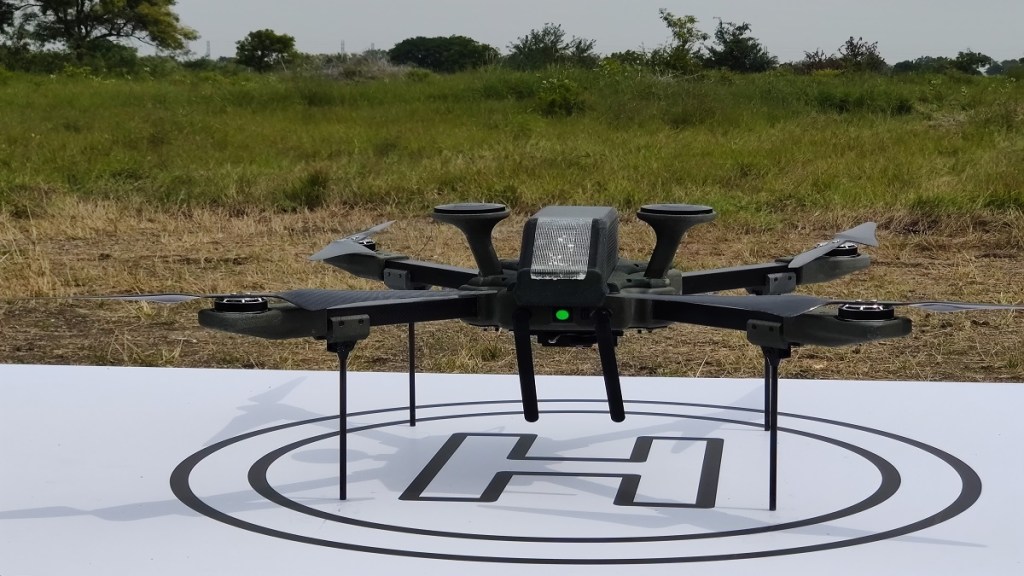Hyderabad-based Grene Robotics commences the demonstration of Indrajaal—an autonomous wide area anti-drone/Counter-Unmanned Aircraft System (C-UAS). The demonstration took place in Hyderabad. This marks an important milestone in the development of an anti-drone system which is capable of protecting against micro, mini, small, large and extra-large drone classifications.
The system has the ability to detect, identify, classify, track, and swiftly neutralize threats in real-time, making it a formidable force in the field. With 360-degree protection, Indrajaal can cover vast areas of up to 4000 sq. km and provide a comprehensive framework to defend against all classifications and levels of autonomous drones.
The unveiling was done in the presence of the Governor of Uttarakhand, Lt. Gen. Gurmit Singh, who said, “Indrajaal marks a groundbreaking advancement in defence technology that is set to reshape the security landscape for defence, public infrastructure, and private sectors. This system will not only enhance our nation’s self-reliant military capabilities but also address the urgent need of the hour to defend against the increasing threat of drones.”
Indrajaal’s design principle leverages a LEGO block-like combination mechanism of 12 unique layers of technology powered by artificial intelligence for the first time in the world.
From low RCS threats to medium and high-altitude long endurance (MALE & HALE) UAVs, loitering munitions, smart bombs, rocket showers, nano and micro drones, swarm drones, and more, Indrajaal can protect against all categories of ariel threats.
Drone threat
Over the past two years, India has encountered a significant surge in hostile UAV activity. The country’s defence forces have detected several attempts to drop weapons, money and narcotics into the country. Intelligence reports have indicated that Pakistan’s spy agency, Inter-Services Intelligence (ISI) is actively planning to employ drones for smuggling weapons and narcotics into India’s Jammu and Punjab regions.
Pakistan’s drone missions appear to have three primary objectives: surveillance of Indian security forces, narcotics smuggling, and distributing weapons within Indian territory. Disturbingly, there has been a steady increase in drone-based weapon deliveries, with 76 cases reported in 2020, 109 in 2021, 266 in 2022, and approximately 200 cases in 2023 alone.
This concerning upsurge emphasizes the urgent need for heightened vigilance and the implementation of effective countermeasures to safeguard national security.
There are limitations to current deployments as the future skies will have more friendly drones than threats and stand-alone systems are not scalable and not even practical options.
Also, only radar-based detections are inaccurate at low Radar Cross Section (RCS) and close to the ground. They are even incapable of identifying the operating radio frequency. In many cases, Jamming can only delay, but cannot stop an attack
One of the countermeasures that is largely under discussion is the laser weapons. However, it requires a large non-moving target.
Existing point defence-based anti-UAV systems are inadequate against drone threats as they rely on physical sighting. They can’t protect large defence bases, areas like the National Capital Region of New Delhi which contains several critically important buildings, international borders, and other sensitive regions against UAVs, low RCS missiles, smart munitions and swarm drones.
According to the official from the Grene Robotics, it mitigates all of the above limitations by combining 12 proprietary technologies for the first time in the world.
Indrajaal is an AI-powered wide-area networked system that can cover areas of up to 4000 sq. km. Comprising 12 proprietary modular technologies that can function independently or synergistically.
These technologies focus on the command, control, and missions.
One of the key areas which embrace breakthrough technologies is the autonomous resource planning engine called Green OS. The resource planning is then backed up unified command and control engine.
According to the Wing Commander MVN Sai (Retd), Director Grene Robotics & Co-Founder, Indrajaal fully performs on AI for the planning and execution of missions.
Sai also talks about the ‘‘SpiderMesh’’ which is a high-speed wireless mesh network covering up to 4000 sq. km.
While Indrajaal uses a tractor beam to jam and control drones, its ‘’HyperSensing’’ technologies which is a mix of sensing technologies map large areas.
“Then our “WeaponFusion” makes existing weapons autonomous by integrating them,” explained Sai.
“As the demonstration of Indrajaal commences, we are happy to be creating history in the era of autonomous drone security. The integration of 12 proprietary technologies in a comprehensive network sets Indrajaal apart as the world’s most advanced full-spectrum drone security system,” he said.
The trial is happening at the 79-acre test facility in Hyderabad.

